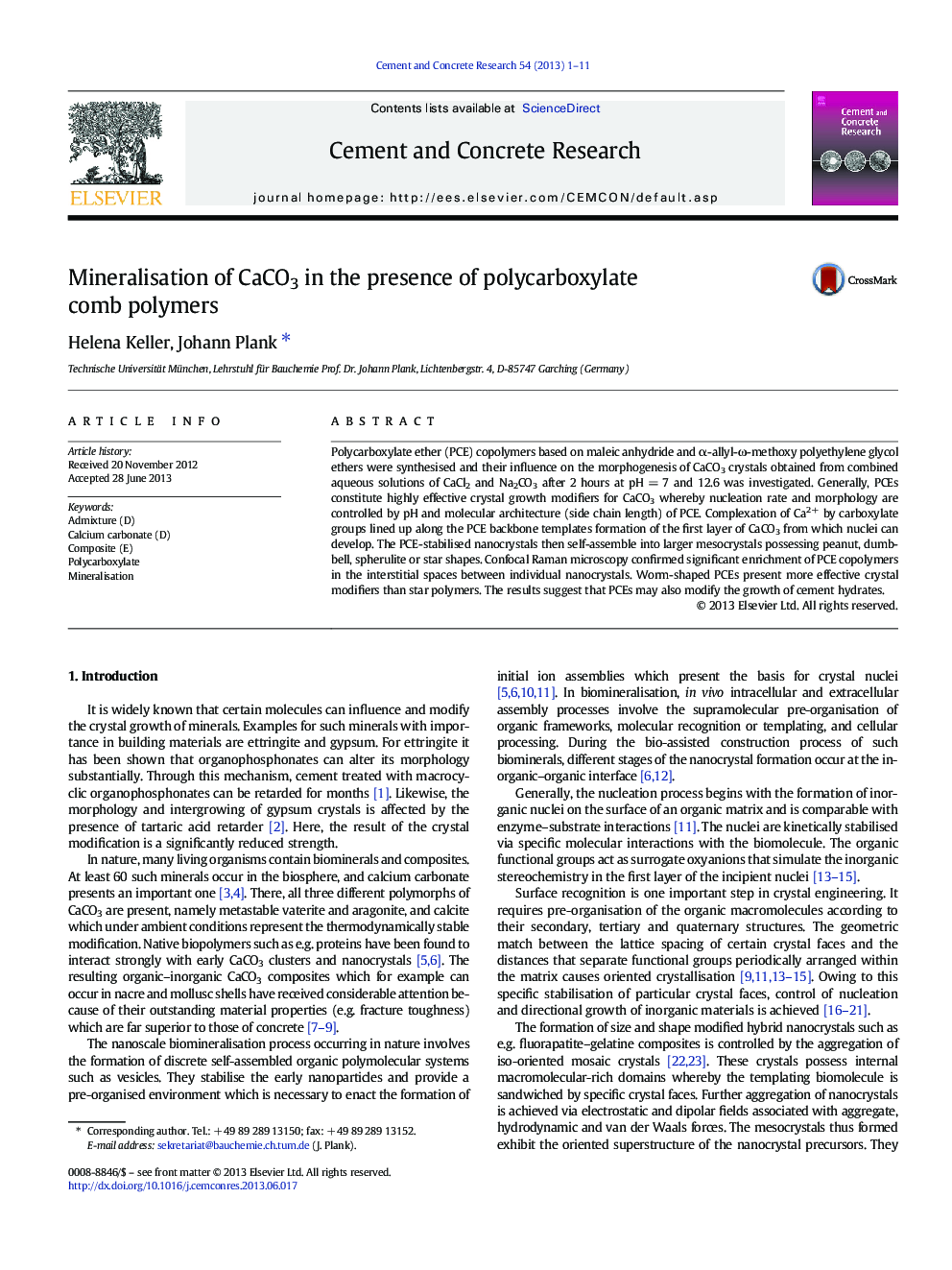| Article ID | Journal | Published Year | Pages | File Type |
|---|---|---|---|---|
| 1456434 | Cement and Concrete Research | 2013 | 11 Pages |
Polycarboxylate ether (PCE) copolymers based on maleic anhydride and α-allyl-ω-methoxy polyethylene glycol ethers were synthesised and their influence on the morphogenesis of CaCO3 crystals obtained from combined aqueous solutions of CaCl2 and Na2CO3 after 2 hours at pH = 7 and 12.6 was investigated. Generally, PCEs constitute highly effective crystal growth modifiers for CaCO3 whereby nucleation rate and morphology are controlled by pH and molecular architecture (side chain length) of PCE. Complexation of Ca2 + by carboxylate groups lined up along the PCE backbone templates formation of the first layer of CaCO3 from which nuclei can develop. The PCE-stabilised nanocrystals then self-assemble into larger mesocrystals possessing peanut, dumbbell, spherulite or star shapes. Confocal Raman microscopy confirmed significant enrichment of PCE copolymers in the interstitial spaces between individual nanocrystals. Worm-shaped PCEs present more effective crystal modifiers than star polymers. The results suggest that PCEs may also modify the growth of cement hydrates.
